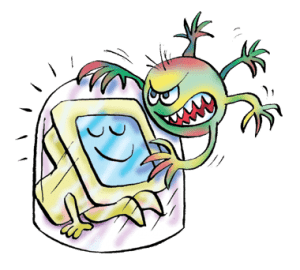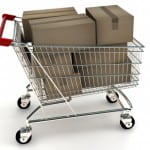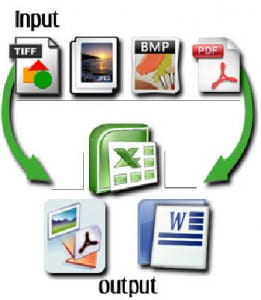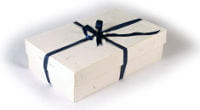Safety
Safety – first!
New students and postdocs must attend the laboratory safety training before working with chemicals and other safety hazards in the lab. Additional information related to safety policies can be found at Environmental Health, Safety & Risk Management at Texas State University
Computers
 If you need any PC/Software related help contact IT Assistance Center ITAC. Be aware, that you are responsible for making sure that there is antivirus and antimalware software installed on all the computer(s) assigned to you (typically, these are the PCs that you use in your work). You are responsible for keeping these programs updated. You are supposed to run this software (both antivirus and anti-spy software) at least once a week (recommended: every night). The suggested free anti-spyware and anti-malware can be downloaded here: Adaware and Spybot Search&Destroy. You are responsible for backing up your data, LabView programs, power point presentations and everything else related to your work on a DVD at least once a month. CrashPlan PRO is available from ITAC for any Texas State owned PC. Data loss could be a really frustrating experience – better be safe than sorry.
If you need any PC/Software related help contact IT Assistance Center ITAC. Be aware, that you are responsible for making sure that there is antivirus and antimalware software installed on all the computer(s) assigned to you (typically, these are the PCs that you use in your work). You are responsible for keeping these programs updated. You are supposed to run this software (both antivirus and anti-spy software) at least once a week (recommended: every night). The suggested free anti-spyware and anti-malware can be downloaded here: Adaware and Spybot Search&Destroy. You are responsible for backing up your data, LabView programs, power point presentations and everything else related to your work on a DVD at least once a month. CrashPlan PRO is available from ITAC for any Texas State owned PC. Data loss could be a really frustrating experience – better be safe than sorry.
Data keeping format
When you put together your data in a file, please follow the following simple rules for data storage/presentation. The Origin file must contain: a very brief title giving the main idea of the measurement, description of your sample including the date of the growth batch, type of device, type of contacts, thickness of the dielectric, etc, correct axes labeling with right units, brief description of the measurement conditions, a file path to these data on your hard drive, a brief list of conclusions you made from this experiment, some extracted numbers (such as, e. g., mobility, photoconductivity, threshold voltage, etc), in some cases, it is useful to include photos of the samples, or SEM/AFM images next to the curves. In addition to storing your data on a hard drive and a DVD, please print them out and attach to a special folder, where all your data should be kept. It is also highly recommended to print out small (reduced size) copies of the main plots and results and attach them with comments to your lab book describing the corresponding experiments.
Each group member should make an effort to come to the group meetings prepared. Bring your notebook, data, and other relevant materials to the group meeting. Your attitude towards the meeting should reflect the fact that this is your chance to show your data and results, as well as discuss possible concerns/questions with your PI and other team members. Try to “digest” your information, before presenting it at the group meeting.
Lab rules
 No wearing flip-flops in the lab. It’s a safety violation.
No wearing flip-flops in the lab. It’s a safety violation.
No eating in the lab. It’s a safety violation.
Wash hands thoroughly before and after working with samples, even when you use gloves anyway.
Hazardous waste disposal is governed by the EPA and the Texas Commission on Environmental Quality (TCEQ) through State and Federal regulations. The purpose of environmentally sound disposal methods is to prevent harm to the water, land, and air.
Texas State University complies with hazardous waste disposal regulations by means of the Hazardous Waste Management Program Texas State University UPPS 04.05.06 Disposal of Hazardous Waste. The Environmental Health, Safety & Risk Management office EHSRM) administers this program.
Chemical waste containers for used solvents must be maintained under each hood. The container must be labeled “Used solvents (include a list of solvents dumped there)”. The container can be either a used amber glass bottle of appropriate size or EHSRM-issued special container (white plastic for acids and other harsh chemicals). The container MUST NOT be tightly closed. A dedicated funnel must be sitting in the mouth of the container or nearby. The funnel must also be labeled “For dirty solvents only”, it must not be used for other purposes.
Used tissues, paper towels, gloves, etc used for cleaning parts with solvents have to be collected from the grey bin under the hood and placed in designated plastic bags on a regular basis (at least once a week). The bags have to be placed away in a trash bin or other designated bin. No chemicals, other that materials exposed to simple solvents (acetone, propanol, ethanol, etc) can be placed in these trash bins.
If you need to work with more dangerous chemicals (acids, etc), first discuss it with the PI, even if you had a prior experience working with these chemicals; second, make sure to dispose such used chemicals only in EHSRM issued white plastic bottle with appropriate label; third, watch for the amount of the waste in the bottle and arrange EHSRM pickup timely.
The last person leaving for the day is responsible for (a) checking around the labs for basic safety, and (b) locking all the lab doors. Checking for safety includes EGW: electricity, gas and water. “Electricity” includes power devices like furnaces or hotplates that have to be turned off, unless an overnight experiment is performed, ceiling lights, desk lamps, microscope lights, etc. “Gas” – includes compressed gas cylinders (make sure the valves are closed, unless it needs to be open overnight). “Water” – includes cooling water for furnaces, electromagnet and close cycle cryostats. All these should be shut off unless an overnight experiment is performed.
When you need to order gas cylinder(s) or liquid cryogens (liquid N2 or He), please first discuss it with the PI, unless you already know what you are doing.
If you need a machine shop to make a special part or equipment that is not commercially available, please contact our machine shop service (Room RFM1211).
Gloves. We only use powder-free gloves in our lab. Gloves can be obtained from the physics stockroom. Note: Nitrile gloves are expensive, so careful and thoughtful usage is necessary. Wear gloves while performing any work with chemicals (solvents, resists, SAMs, organic powders, polymers, etc.), all cleaning work (substrate cleaning, glassware cleaning, glovebox cleaning, spin-coater cleaning, oil change in vacuum pumps, general lab cleaning), work with vacuum parts (chambers, gauges, flanges etc) and especially any work related to the vacuum thermal deposition chamber (involving handling of QCM, deposition crucibles and boats, deposition materials, ets). While wearing gloves, do not touch anything else unrelated to the parts you are working with, such as door knobs, your face and hair, clothes, pens, keyboards, etc. Exchange gloves between different tasks. For example, if you just cleaned up the spin-coater, do not use the same gloves to touch any other unrelated parts. If you were changing pump oil, do not use the same gloves for handling the QCMs, etc. Also, change gloves when you go from one level of purity to the next during the process of preparing your setup. For instance, while cleaning Glass/ITO substrates, first thoroughly clean the bench and the surrounding area (this might make your gloves pretty dirty), then change to fresh gloves and do a thorough cleaning of the glass slides and tools you will be using (e.g. tweezers). This might dirty your gloves less and with different contaminants. Still change to a new pair of gloves before e.g. deposition of PEDOT:PSS film in the spin-coater. Always use 2 pairs of gloves to work in the glovebox (one inside and one outside glovebox gloves). First pair will protect your hands and second pair will protect your sample in the glovebox from contamination. In many cases gloves can and should be re-used. This can be done when you are performing not-so-dirty work, such as handling relatively clean vacuum parts, final cleaning of the ITO substrates, after which the used gloves can be re-used again for the initial dirty clean-up or an oil change. Please, make effort to save gloves, yet without jeopardizing safety, chemical hygene and purity of your experiment.
Manuals for instruments/devices/machines or components are never to be discarded. For each piece of equipment that comes with a manual or description of some sort, we make a folder and store the manual and other related documents in that folder labeled with the name of the equipment. Before using the equipment, each student/postdoc must be directed to read the manual at least briefly, and only after that work with a person assigned to this machine/equipment. If there is no person assigned to the equipment, the user should familiarize himself/herself very carefully with the manual, including safety and maintenance protocols.
Purchases
 When you need to purchase anything for your work, first make a list based on your internet search. Some standard items, such as certain chemicals, vacuum parts, etc, we purchase from standard suppliers via “marketplace” of preferred vendors called BOBCATalog. Ask a senior group member about those. Discuss your purchases with the PI. If your purchase is below $500 – try to find it within BOBCATalog. If you find a proper item, you can order it online using account number, provided by your PI. Larger purchases have to be done using a purchase order (PO).
When you need to purchase anything for your work, first make a list based on your internet search. Some standard items, such as certain chemicals, vacuum parts, etc, we purchase from standard suppliers via “marketplace” of preferred vendors called BOBCATalog. Ask a senior group member about those. Discuss your purchases with the PI. If your purchase is below $500 – try to find it within BOBCATalog. If you find a proper item, you can order it online using account number, provided by your PI. Larger purchases have to be done using a purchase order (PO).- When completing a purchase order (PO), please use a doc form. Make sure to get an updated quote from the company, include correct addresses, ask your PI which grant account to use. If the item’s cost is greater than $5000, you are supposed to obtain three quotes for similar equipment from three different companies, showing that you will be using the cheapest option. After completing the PO form, ask your PI to sign it and make 2 copies: one copy goes to the business office, and the other one you have to put in the special folder named “Orders” that we keep in the lab. Ask our business office how to submit the PO to the company. If you have not received your shipment in a few days, stop by the business office and follow up on your order. It is your responsibility to keep track of each order you place. Sometimes companies forget to ship, use wrong addresses, or lose the orders – all these can cause a delay or loss of your order. Every time you create a new doc file with a PO, please name it “PO_company name_date.doc” and save in a designated folder on your computer; next time you order from the same supplier, you can modify this file.
- When you receive an order, make sure that the items are correct and there are no duplicated orders; please collect the paperwork included with the shipment – packing slips or invoices – staple them together to the copy of the corresponding PO and put it in the folder “Orders”; if there are MSDS materials included (usually when you receive chemicals), put them in a separate special folder labeled “MSDS”.


